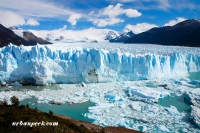Francois Mellet, Electrical Engineer: Uranium in nature is a slightly radioactive metal that occurs throughout the Earth’s crust. It occurs in most rocks, in concentrations of 2 to 4 parts per million. Uranium is about 500 times more abundant than gold. It is also naturally present in most soils, as well as in many rivers and in sea water. The earth’s Uranium (chemical symbol U) was apparently formed in supernovae up to about 6.6 billion years ago. Its radioactive decay provides the main source of heat inside the earth, causing convection of molten rock and consequent continental drift.
Kelvin Kemm is a nuclear physicist and chairman of the South African Nuclear Energy Corporation: South Africa is getting ready to buiild three new nuclear power plants. Koeberg nuclear power plant was built on time and within budget, 40 years ago. There is no reason why South Africa cannot do it again. We have far superior skills and technology now than we had then. Anti-nuclear activists want wind and solar instead.
Cairns Bain, M.Sc. nuclear physics and Ph.D. coastal oceanography: At the dawn of the nuclear power age it was realised that nuclear power plant workers could potentially be exposed to nuclear radiation from the operating plant. As a result, extensive studies were carried out concerning possible radiation absorption, and what such radiation could then do to the people. These international studies were not confined to the workers at nuclear plants, but were extended to consider any people living anywhere near nuclear plants.
Kelvin Kemm, Rosatom, Nuclear Africa - Rosatom presented an nuclear power integrated solution for African countries. ROSATOM gave presentations on the corporation's integrated offer, nuclear education, construction of research reactors and establishment of nuclear technology centers. Similarly, ROSATOM offers its customers an integrated approach to construction of research reactors and establishment of research centers.







